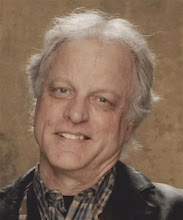On July 17 and 18, 1914 - and for almost every day of the 1914 season to that point, the Boston Braves were in last place. Eighth place, since there were no divisions and all the teams had to battle for the pennant without any hopes of winning via a wild card.
The Braves were 11 1/2 games out of first place on the morning of July 18, 1914.
The Red Sox will be 9 1/2 games out of first place on the morning of July 18, 2014.
The 1914 team was called the "Miracle Braves" for good reason. They went from worst to first in 38 days, largely thanks to a stretch in which they won 22 games against three losses, beginning on the 18th. They took first place on August 25. They took it for good on September 5.
Could it happen again in Boston, exactly 100 years later? Of course, it could.
You can read the full story of the 1914 Braves in a book written by SABR members and published by SABR. It is THE MIRACLE BRAVES OF 1914: BOSTON’S ORIGINAL WORST-TO-FIRST WORLD SERIES CHAMPIONS edited by Bill Nowlin (SABR, 2014). It's available on Amazon, among other places. (It's free to all SABR members as an e-book, as are all SABR publications. For non-members, it's reasonably priced.)
There is always hope (until there can't be.)
Here is a good part of Bob Brady's foreword to the book:
Once a
dominating franchise during baseball’s early days, the Braves had been in a
serious state of decline for many years prior to 1914. Some of that deterioration could be
attributed to the birth of the American League in 1901 and the introduction of
the Boston Americans (later the Red Sox) as a neighboring competitor. Weakened by the junior circuit’s player
raids, frequent changes in ownership, and an obsolete ballpark, the Braves
struggled both on the field and at the gate.
Even their band of loyal followers, the Royal Rooters, had shifted their
allegiance to the Red Sox. The Braves’ new
owner, James E. Gaffney, a New Yorker with ties to Tammany Hall, sought to
reverse the team’s fortunes. After
residing in the National League’s basement for four consecutive seasons,
Gaffney’s Braves surprisingly ascended to fifth place in 1913, led by the
irascible George Stallings in his first year at the Tribe’s helm. Gaffney also laid out plans to construct a
state-of-the-art concrete and steel ballpark at the site of a former golf club
a little over a mile away from Fenway Park to replace the Braves’ antiquated
South End Grounds. Still, expectations
for the following season were modest: a return to the senior circuit’s first
division – a feat not accomplished since 1902.
Mired in the
National League cellar in mid-July, the ragtag ’14 Braves not only rose from
eighth to first place in a little over two months, this legendary team played
.781 baseball (50 wins, only 14 losses) from July 1 to season’s end and finished
atop the National League standings an amazing 10½ games ahead of its nearest
rival, John McGraw’s New York Giants.
Much of the credit belonged to the tough and often profane Stallings,
who once described his team as comprising “one .300 hitter, the worst outfield
that ever flirted with sudden death, three pitchers, and a good working combination
around second base.”[i]
To capture the pennant in the face of his roster’s limitations, Stallings deftly
refined the art of platooning to capitalize upon strengths and mitigate
weaknesses. The eminent baseball writer,
historian, and statistician Bill James regards Stallings’ skillful maneuvering
in 1914 as having an “almost revolutionary impact” on baseball managers.[ii] However, despite such adept leadership and a
half-season of heroics, the Braves were given little chance of besting the
mighty Philadelphia Athletics in the World Series. Their fall classic sweep of the highly
favored Mackmen was the final piece needed to forever brand this team the
Miracle Braves.
The Tribe’s
extraordinary achievement 100 years ago perennially gets dusted off by the media
during the dog days of summer whenever a bottom-dwelling ballclub exhibits some
signs of life. An unexpected winning
streak that ignites a spark of hope among a franchise’s heretofore frustrated
followers often leads them to ask themselves: If the Miracle Braves could do
it, why not us? The front offices are
challenged not to throw in the towel and begin rebuilding efforts while the team
still retains the glimmer of a chance of replicating the Braves’ legendary 1914
climb to the top of the standings.
[i] John C. Skipper, A Biographical Dictionary of Major League
Baseball Managers (Jefferson, North Carolina: McFarland, 2003), 298.
[ii] Bill James, The Bill James Guide to Baseball Managers from 1870 to Today (New
York: Scribner, 1997), 46.

No comments:
Post a Comment